G. L. Pease
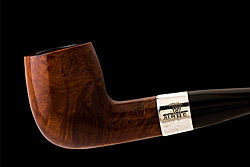 As I put the finishing touches on this edition, I’m sitting on the back porch, enjoying a beautiful, cool but sunny almost-spring day. Birds are singing, bees are busy gathering pollen and nectar, and legions of chorus frogs are on the prowl, devouring insects and looking for love. Between my teeth is a small 1918 Keystone billiard filled with a long aged mixture, its fragrant smoke softly dissipating in a very gentle breeze. This pipe was a lucky find; and I got it for a price much lower than so much enjoyment should cost. When it arrived in the post, there was little doubt it had been, shall we say, enjoyed rather a lot, but its restoration was relatively painless, and the result was well worth the efforts. It is a wonderful old pipe with many stories to tell. At nearly a century-year old, it’s still looking pretty darn good, smokes beautifully, and is a delightful testament to the enduring quality of the classics.
As I put the finishing touches on this edition, I’m sitting on the back porch, enjoying a beautiful, cool but sunny almost-spring day. Birds are singing, bees are busy gathering pollen and nectar, and legions of chorus frogs are on the prowl, devouring insects and looking for love. Between my teeth is a small 1918 Keystone billiard filled with a long aged mixture, its fragrant smoke softly dissipating in a very gentle breeze. This pipe was a lucky find; and I got it for a price much lower than so much enjoyment should cost. When it arrived in the post, there was little doubt it had been, shall we say, enjoyed rather a lot, but its restoration was relatively painless, and the result was well worth the efforts. It is a wonderful old pipe with many stories to tell. At nearly a century-year old, it’s still looking pretty darn good, smokes beautifully, and is a delightful testament to the enduring quality of the classics.
Throughout the history of the pipe, there have been many explorations of aesthetics, of technology, of materials, but here we are, nearly 160 years after the supposed discovery of briar, most of us smoking pipes that aren’t much different from what our grandfathers or great-grandfathers would have smoked, and in some cases, we’re smoking those very pipes. In so many ways, today’s pipes are yesterday’s pipes are tomorrow’s pipes. Nihil sub sōle novum. Each time we light a bowl, we hold something timeless in our hands, something very rare in today’s world of disposability. That’s pretty special.
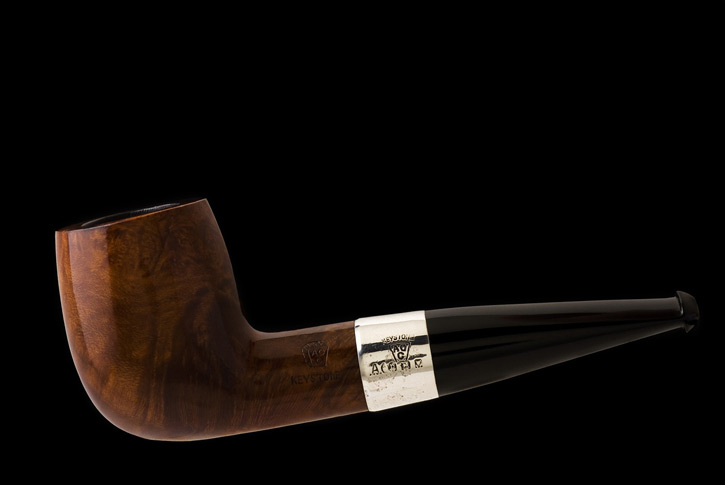
On to the Q&A.
Mark wonders: I’m always buying new tins of tobacco to try something different or something I’ve heard about that I just have to try. The problem is that I end up with lots of open tobacco. I’ve been storing the unsmoked leaf in small canning jars. My question is, how does opening a tin interupt any aging that may take place. If the unsmoked tobacco is put in a jar and left sealed, does any aging occur from that point on, or is the process totally halted. Also how does opening the jar every couple months to take another sample out complicate the process? I’m thinking that by using the canning jars I’m maintaining the moisture content, but that’s about it. Your expert opinion would be highly appreciated!
A: This is one of those tough decisions faced by those of us who enjoy aged tobaccos. Once the seal is broken, things change in that little microcosm, and you’ll never get back to square one. “Aging” still happens, but it’s quite a different sort of thing. How much different it is depends on many factors, including how long the tobacco had originally been aging in its sealed tin. I generally recommend smoking up an aged tin fairly quickly once it’s been opened, which is why I prefer smaller 2oz (or 50g) tins for the cellar, but it’s not always practical to do so. By keeping the contents of that tin in a tightly sealed jar, you’ll at least maintain its quality over the weeks or even months that it takes to finish it, but it’s almost certainly going to undergo some additional changes during that time. You may find that you actually enjoy the aged blend more after a couple days of air time. It’s not unlike how an open bottle of wine changes as it “breathes;” though the time-frame with tobacco is much longer, it too can “open up” over a few days or even weeks to offer new dimensions. One good thing about tobacco is that it won’t “turn to vinegar” over time the way an open bottle of wine will (as good a justification as any for finishing the bottle).
If you’re trying blends that don’t have much age under their belts, then just jarring them up again and putting them aside will provide at least some if not most of the benefits of time that you’d have gotten had you left the tin sealed in the first place. It’s really all a matter of exploration and enjoyment, after all, and figuring out what works best for you.
Alain worries about the tobacco apocalypse: I have been reading a lot lately about people cellaring tobaccos to hedge against future tax hikes and government legislation. How, as a business and a blender, are you protecting yourself from predicted government legislation against tobacco. It would be a shame to see many blenders have trouble staying open due to government meddling. Any insight would be appreciated. What does your tobacco stash look like?
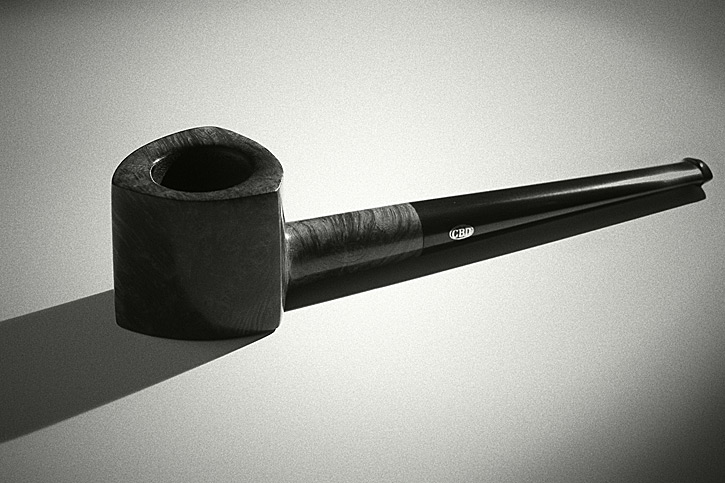
A: Tax hikes and increased legislation are as inevitable as inflation; it’s the only way bloated, top heavy government agencies can continue to exist. Of course, we’re all concerned over the proposed additional regulation and taxation, and the fact that it appears as though Big Brother just wants tobacco to go away. Personally, I think it’s kind of a Chicken Little, “Sky is falling” scenario. While it’s certainly true that there’s a very loud, vocal subgroup opposing tobacco use of any sort, the fact is that tobacco production and sales in the US account for a very large and healthy revenue stream, and if all the antis got their way, eliminating tobacco in all its forms, the resulting deficit through the loss of that revenue would be huge. You can’t fill a hole with hot air. But, the gasbags will keep trying, and no matter how we look at things, tobacco will never be any cheaper than it is today, so buying for the future is certainly not a bad hedge if you want to enjoy your pipes into the next decades.
The possibility of FDA regulation, on the other hand, is a more significant threat, especially to the small producers (like, ahem, G.L. Pease). While the large factories could absorb and amortize the resultant costs more easily, the sad fact is that if we were forced to perform the very expensive third-party testing and analyses that the FDA would require of every batch, we’d either have to raise prices drastically, as well as reduce the number of blends offered, or shut the doors forever. The result to the consumer would be a dramatic decrease in the choices available to them. Many of the small-batch premium tobaccos we enjoy today would disappear, and all that would be left are the mass-market products from large producers. Ironically, the majority of pipe smokers in the US wouldn’t be effected, as only a small percentage of the roughly 2.5 million who enjoy the briar buy the small-batch, boutique tobaccos. But to those of us who do, this is one way the sky could definitely be falling. For a change, threats of increased taxation are not the greatest enemy we face. Again, stocking up for the future might ultimately be your best recourse, and a change in careers might be mine.
My stash? I’ve been accumulating slowly over 30 years. I could stop acquiring new tobaccos today, and enjoy my pipe for another 30 years, or longer. And, yes, I continue to add to it, though its mostly my own blends at this point.
Steven asks: Greg, I’m curious as to what some of your favorite tobaccos are (other than your own, of course).
A: A lot of my cellar consists of blends that are no longer available. My all time fave, as many know, is the fabled Orient Express #11 made for the now defunct Garfinkel’s of Washington DC by Sobranie House. To my taste, it was one of the most exquisitely balanced, complex and nuanced tobaccos ever produced, and I consider it very good fortune that I was able to acquire quite a few tins before it disappeared forever. (In fact, before Larry shuttered the shop, he sold me his last pound, a box of 8 2oz tins. I’ll never forget that sad phone call.) There are a number of the old classics that I have laid in, and still enjoy a great deal. I have to admit that between the time spent smoking my own prototypes during development and enjoying my stash of aged tobaccos, I don’t have much time to sample much of what is currently being produced, and new stuff just keep on coming. I’ll never catch up…
Spartan wants to know: In "Number 20", you wrote an answer pertaining to nicotine in aged pipe tobacco. Some of which reads, “The higher the pH (more alkaline), the more readily available nicotine in the smoke stream can be absorbed. If the aging of the leaf reduces sugars, the pH of the smoke will likely rise, increasing the bioavailability of Vitamin-N. But, this doesn’t always seem to be the case.” Is there an easy way to measure the pH of my tobacco?
A: The short answer is no. What you’d want to do is measure the pH of the smoke produced, not the tobacco itself, and that gets a bit tricky. The smoke has to be captured, usually by filtering it through a liquid medium, and the pH of the solution measured and normalized to get a meaningful result. It’s easier, but not simple, to find the pH of the leaf itself. Unfortunately, the result on pH of the aging process remains somewhat mysterious in a real sense. It’s true that some tobaccos seem to “get stronger” with age, whist others become “milder.” Certainly much of the available sugars are being consumed by microbial metabolism, but at the same time, longer chain carbohydrates are being digested to produce simpler sugars. It’s a sort of race condition that is difficult to predict. It’s on the long list of things I’d love to put more research time into. Sadly, my own metabolic machinery seems to be digesting time at an an increasing rate…
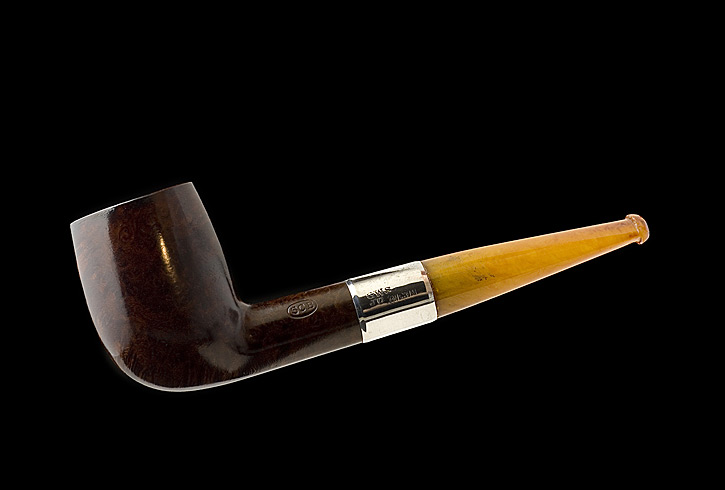
From Bob: I realize this might be an oddity, but here goes: A very few tobacco blends that I love are actually better, to me, when they’re younger. Penzance, for example, has an oriental zing that disappears after a couple of years in the tin. But I’m a stockpiler. And I hate thinking that the qualities I love in some blends are going to simply vanish when I open some of my tins 10-20 years from now. So I’m wondering: Is there any way to dramatically slow the effects of aging on tinned blends? Since heat speeds the effect, would refrigeration slow them? And would screw-on/open-with-a-coin tins retain their seal if actually refrigerated over time? Thanks!
A: Cold storage will certainly slow down the chemical and organic processes that take place as a tobacco ages. It’s not likely to grind to a halt, but it’s probable that keeping tobacco close to, but above the freezing point, will cause it to retain some of its youthful attributes for a longer period. Freezing would slow things down still further, but the damage to the structure of the leaf might affect the its smoking characteristics in ways that we won’t like. Additionally, depending on what you prefer about these young tobaccos, you may find that storing with plenty of additional air space may be to your advantage. Regarding the seal on those tins, it’s hard to say. Cooler temperatures, of course, will increase the vacuum slightly, but it will also make the seal less pliable, and could result in early failure.
Unfortunately, there’s no way to stop the hands of time. Your best bet is to enjoy the young tobaccos for as long as they are available, and hope for the best with whatever you put into cold storage. Or, invest in my new venture, the WayBack Corporation. I’ve retained Mr. Peabody as CEO, and we’re currently testing our latest time-machine technology. We should be ready to release our product very soon, so it should be on the dealers’ floors about ten years ago…
That’s it for this month. Keep ’em coming.
-glp
All Photos Credit & Copyright © G. L. Pease from his personal collection. Used by Permission
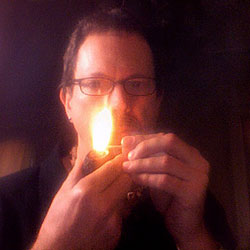 Since 1999, Gregory L. Pease has been the principal alchemist behind the blends of G.L. Pease Artisanal Tobaccos. He’s been a passionate pipeman since his university days, having cut his pipe teeth at the now extinct Drucquer & Sons Tobacconist in Berkeley, California. Greg is also author of The Briar & Leaf Chronicles, a photographer, recovering computer scientist, sometimes chef, and creator of The Epicure’s Asylum. See our interview with G. L. Pease here. |

















The pipes chosen for this essay are outstanding. I’m in love with that Keystone and GBD (Unique?)
I forgot to add that in conversation with JM Boswell of Boswell Pipes, he has also mentioned that the FDA has been leaning on him regarding his toppings and it worries him greatly. Nothing good can come of governmental meddling, a lesson the restaurant industry has learned with the recent menuboard caloric content labeling mess.
Good article!
Many thanks for writing.
Al, the GBD is an old New Era (say that ten times fast), not a Unique, likely from the 1920s or 1930s. (GBDs are SO difficult to pin down, sometimes.) It’s a fascinating little thing. The Keystone is possibly a GBD second, as it’s an Oppenheimer product, as indicated by the silverwork. It’s really a wonderful pipe, and a lovely smoke. Glad you liked the photos.
-glp
Those pipes are just gorgeous.
Greg, Yet another great article & the pipes are, in a collectible sense, museum pieces (but no doubt very well used too).
Point about the FDA is disturbing – between them and our health regulators this side of the pond it is certainly time to stock up. I have seen so many good and some great producers disappear, or at least get taken over by Orlik or KKK, this side of the pond. I had been watching “Pipes Magazine” and as there were no recent features on the FDA had assumed they were at least slow bureaurats (not a typo). Are we drinking in the last chance saloon and, not to beat about the bush, is it “last orders please” or nearly so?
Ed Turner
“there’s a very loud, vocal subgroup opposing tobacco use of any sort, the fact is that tobacco production and sales in the US account for a very large and healthy revenue stream…”
I think you undersell the antis, Greg. These people are numerous and in positions of power all over the country, from local health boards to congress. They’ll drag along (mostly) leftist politicians that, despite appreciating the luxury of tobacco tax revenues, will sacrifice the revenue stream to push forward the antis’ agenda because they won’t want to be seen as pro-tobacco/smoking/individual rights, etc. Just as the temperance movement achieved prohibition the antis will get us as close to that through regulation and taxation as possible without making it entirely illegal. Trying smoking in a public park, and in some places your own car, and see what happens.
The more pressing problem is that at least one, maybe two full generations of Americans have been brainwashed into thinking that tobacco smoke isn’t just bad for you but is the equivalent of a dirty bomb. Few non-smokers will support our right to enjoy tobacco when they think they’re doing us and themselves a favor by eliminating it. Unless pipe and and cigar smokers get politically active with smoking issues the proverbial sky really will be falling. Thank goodness Mayor Bloomberg is showing people what type of door they opened with smoking bans.
Other than that, another great column, Greg 🙂
At the risk of being pummeled, may I respectfully add this: I’m a pipe smoker. I smoke in moderation — great moderation compared to some folks I know. A bowl a day maybe three or four times a week. Always at home in the evening.
I’m a college professor, so it seems like a natural time to deal with the pain of grading papers by enjoying a bowl and accompanying it with a good wine.
Having said this, I must come down on the side of the opponents of smoking in public places and advocates of higher taxes on tobacco. Forgive me, but it’s clear that there’s connection between disease and tobacco use. Latest research shows that there’s no statistically significance between cigarette smoking, although I don’t know that the methodology accounted for dosing.
Is it not possible to hold two seemingly contradictory thoughts at once: 1.) We enjoy pipe tobacco and good pipes. 2.) Tobacco use is, without question, closely associated with serious health problems.
I don’t see a contradiction here for the pipe smoker:
Risk is pervasive. Everyone knows that, yet, familiarity doesn’t diminish the validity of the premise. We drive cars. We pay dearly for the privilege. We fly, and we pay dearly for extra security. The idea’s clear. My argument is that pipe-smoking is an aesthetic experience that we value, and that, like driving, carries a risk that is both absolute (in terms of the cause-and-effect relationship) and probably dose-related.
Short of giving up our valued aesthetic pleasures, such as good wine and fine pipe tobacco,can we not accept, a.) that non-smokers in public spaces have no obligation to ingest our secondary smoke; and, b.) that we accept the risk and its price of using pipe tobacco and cope with that risk however we see fit — e.g., coping can mean anything from adjusting our dosing to doing nothing at all. But, I fail to see that the civil liberties of pipe smokers are being limited by being required to enjoy our pleasure in ways that do not infringe on others’ right to breathe that’s not laced with smoke?
But, of course, we have the right to choose what we do so long as we affect only ourselves, understand the risks, and mitigate the risks.
And, yes, I’m one of those crazy, liberal college teachers. I work in Holocaust and genocide studies, so I’m terribly sensitive to matters of human rights and infringements thereon.
I offer these comments with the most sincere respect and openness to others’ views; I certainly make to claim to having an Answer. As I tell my students, questions are more important than answers.
Thank you for reading this.
warm regards,
avi
Avi, you might want to read this –
–
https://pipesmagazine.com/blog/kevins-blog/here-we-go-again-ridiculous-melodramatic-absurdity-disguised-as-facts/